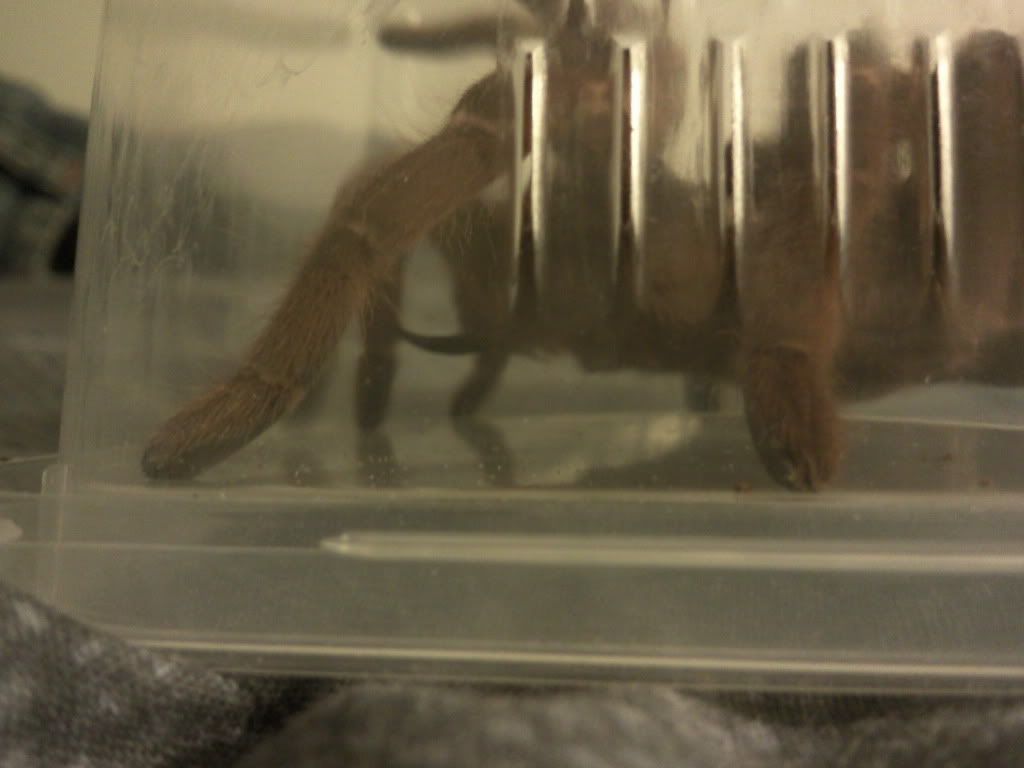Recently brought a new enclosure for my KB since she was starting to outgrow her old enclosure. She has unfortunately got herself into a little problem though. There was a vent on the side which wasnt covered up [has been now] which she started putting her fangs into. Unfortunately she got one fang stuck into the vent mesh and when she started trying to get it out, it looks like she bent the fang all the way around. As you can see in the picture below [kind of blurry sorry].
What do I do? I'm worried that it might do longterm damage to her and she is one of my favourite tarantulas. Will she molt out of it? Discard the fang? Can anyone help who has similar experience with this.
Obviously the following picture was taken after I took her out of the enclosure and had her in a temporary place.

What do I do? I'm worried that it might do longterm damage to her and she is one of my favourite tarantulas. Will she molt out of it? Discard the fang? Can anyone help who has similar experience with this.
Obviously the following picture was taken after I took her out of the enclosure and had her in a temporary place.






Comment